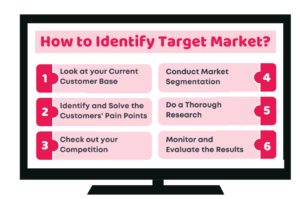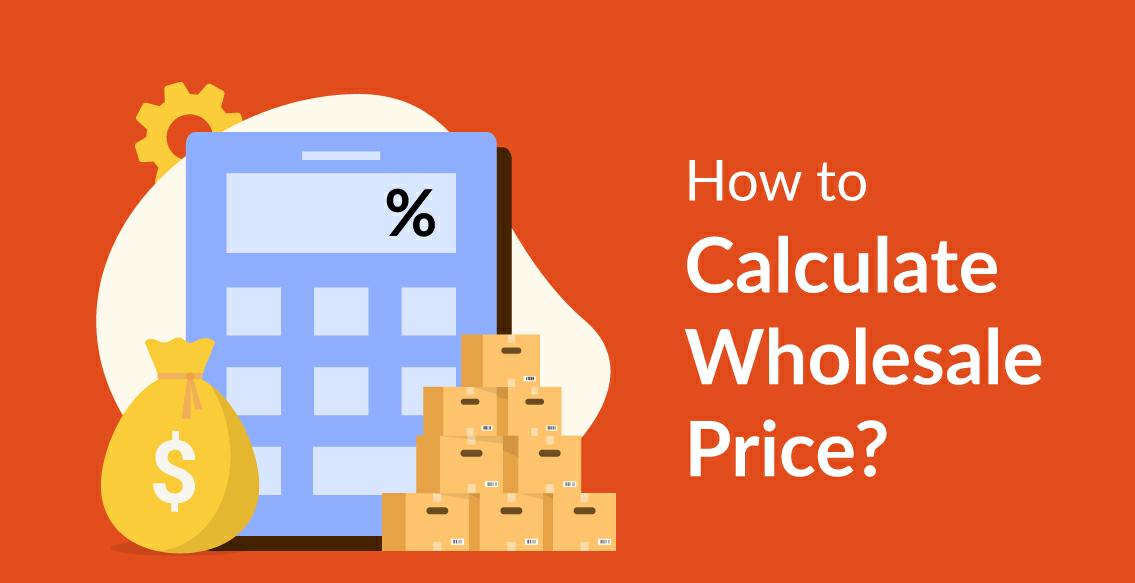Pricing is a crucial aspect of any business, and getting it right can be the difference between success and failure. In the competitive world of wholesale, pricing for profit is not just about covering costs, but about maximizing margins to stay ahead of the competition. However, many entrepreneurs and small business owners struggle to calculate wholesale prices that balance profitability with customer demand. This can lead to razor-thin margins, stagnant growth, and a constant struggle to stay afloat. But what if you could unlock the secrets to pricing for profit, and confidently set wholesale prices that drive revenue and growth? In this comprehensive guide, we’ll take you through a step-by-step process to calculate wholesale prices that maximize your margins, and provide you with the tools and strategies you need to stay ahead of the competition and drive long-term success.
Understanding your costs: A deep dive into calculating wholesale prices
As you embark on the journey to calculate your wholesale prices, it’s essential to first understand the complex web of costs that underpin your business. This is where the rubber meets the road, and accuracy is crucial. You must take a microscope to your operations and identify every single expense that contributes to the production and delivery of your products. From the cost of raw materials and labor to overheads, packaging, and shipping, every detail matters. It’s not just about tallying up the obvious expenses, but also about factoring in the hidden costs that can quietly erode your profit margins. This includes things like equipment depreciation, marketing expenses, and even the time you spend on administrative tasks. By meticulously cataloging each cost, you’ll be able to create a comprehensive picture of your business’s financial landscape, and from there, you can begin to calculate wholesale prices that will drive profitability and growth.
Identifying your target market and customer demand

On the journey of pricing for profit, it’s essential to understand who your target market is and what drives their purchasing decisions. Identifying your ideal customer and grasping their needs, preferences, and pain points is crucial in determining the optimal wholesale price for your product. Your target market is not just a demographic, but a psychographic – a group of people who share similar values, interests, and behaviors. To effectively price your product, you need to delve deeper into their minds and understand what motivates them to buy. Are they driven by quality, convenience, or price? What are their pain points, and how does your product solve them? By answering these questions, you’ll be able to tailor your pricing strategy to meet their needs, increasing the likelihood of maximizing your margins and driving sales. Additionally, understanding customer demand is critical in determining the optimal price point. Are there seasonal fluctuations in demand? Are there specific features or benefits that customers are willing to pay a premium for? Analyzing customer demand, helps you identify opportunities to increase prices, reduce discounts, and optimize your pricing strategy to drive profitability.
The math behind wholesale pricing: A Step-by-step calculation
When it comes to calculating wholesale prices, it’s essential to get the math right. A small mistake can lead to a significant impact on your profit margins, and ultimately, the success of your business. To help you navigate this crucial process, we’ll break down the step-by-step calculation into manageable parts.
Wholesale Price: The price at which you sell your product to a wholesaler or retailer. It’s typically lower than the retail price that end consumers pay.
Profit Margin: The percentage of profit you make on a product after accounting for all your costs.
There are two main types of profit margins:
Gross Profit Margin: (Selling Price – Cost of Goods Sold) / Selling Price x 100
Net Profit Margin: (Total Revenue – Total Expenses) / Total Revenue x 100
For wholesale pricing, we’re primarily concerned with the gross profit margin.
Calculating Wholesale Prices:
There are two main approaches to calculating wholesale prices:
- Cost-Plus Pricing: This method involves adding a desired profit margin to the cost of producing or acquiring your product. Here’s the formula:
Wholesale Price = Cost of Goods Sold (COGS) / (1 – Desired Profit Margin)
Steps:
- Calculate your COGS: This includes the cost of materials, labor, manufacturing, and any other direct costs associated with producing your product.
- Determine your desired profit margin: This is the percentage of profit you want to earn on each wholesale sale. Consider factors like industry standards, competitor pricing, and your business goals.
- Plug your COGS and desired profit margin into the formula: The result will be your wholesale price
2. Markup Pricing: This method involves calculating a markup percentage based on the desired selling price. Here’s the formula:
Wholesale Price = Cost of Goods Sold (COGS) x (1 + Markup Percentage)
Steps:
- Determine your desired selling price: Consider factors like retail market value, competitor pricing, and your target market.
- Calculate your markup percentage: This is the percentage you want to add to your COGS to reach your desired selling price. There are various methods to determine markup percentages, such as a fixed percentage or a keystone markup (adding 50% to the cost).
- Plug your COGS and markup percentage into the formula: The result will be your wholesale price.
Example: You run a company that manufactures handcrafted leather journals. The cost of materials and labor to produce one journal is $15 (COGS). You want to achieve a 40% profit margin on your wholesale sales.
Step 1: Determine your desired profit margin.
Desired Profit Margin = 40%
Step 2: Calculate the cost of goods sold (COGS).
COGS = $15 per journal (given)
Step 3: Apply the cost-plus pricing formula.
Wholesale Price = COGS / (1 – Desired Profit Margin)
Wholesale Price = $15 / (1 – 0.4)
Step 4: Solve the equation.
Wholesale Price = $15 / 0.6 = $25
Explanation:
By dividing your COGS by (1 – your desired profit margin), you essentially calculate how much revenue you need to generate per unit sold to achieve your desired profit percentage. In this example, you need to sell each journal for $25 at wholesale to achieve a 40% profit margin after accounting for the $15 cost of production.
Additional Considerations:
This example focuses solely on COGS. There may be additional costs to factor in, such as packaging, shipping, and marketing, which can slightly increase your final wholesale price calculation. Remember, the desired profit margin is a goal, and you may need to adjust it based on market research, competitor pricing, and your overall business strategy.
Pricing strategies for maximizing margins
As you navigate the complex world of wholesale pricing, it’s essential to employ a range of strategies that will help you maximize your margins and stay ahead of the competition. One effective approach is to utilize penetration pricing, where you initially set a low price to attract a large customer base, and then gradually increase prices as demand grows. Another strategy is to adopt a skimming approach, where you set a high initial price to capitalize on the perceived value of your product, and then lower prices as competition increases. Additionally, you can employ value-based pricing, where you set prices based on the perceived value of your product to the customer, rather than its cost.
Case studies: Businesses maximizing margins with wholesale pricing strategies
Understanding how businesses leverage wholesale pricing strategies can be highly valuable. Here are a few examples across different industries:
- Apparel Brand with Tiered Pricing:
Company: “Trendy Threads,” a manufacturer of trendy clothing for young adults.
Challenge: Balancing profitability with attracting new retailers, especially smaller boutiques.
Strategy: Trendy Threads implemented a tiered wholesale pricing structure. Larger retailers who purchase high volumes receive a lower wholesale price per unit (higher profit margin for Trendy Threads). Smaller boutiques receive a slightly higher wholesale price per unit, but Trendy Threads offers marketing support and promotional materials to incentivize purchases.
Outcome: This strategy allows Trendy Threads to cater to different needs while maintaining healthy margins. Larger retailers contribute to bulk sales, while smaller boutiques benefit from additional support and are more likely to promote Trendy Threads products.
- Craft Brewery with Limited Distribution:
Company: “Hoppy Hills,” a small craft brewery known for its unique, small-batch beers.
Challenge: Maintaining brand exclusivity while maximizing profit margins on limited production runs.
Strategy: Hoppy Hills strategically selects a small network of high-end bars and restaurants as their wholesale partners. They offer a slightly higher wholesale price than the industry average, justifying it with the premium quality and limited availability of their beers.
Outcome: By focusing on high-end partners, Hoppy Hills commands premium prices and maintains brand image as an exclusive, high-quality product. This limited distribution also allows them to focus on perfecting their brewing process and avoid mass production costs.
- Tech Startup with Subscription Model:
Company: “Cloud Storage Solutions,” a tech startup offering cloud storage subscriptions to businesses.
Challenge: Encouraging long-term customer relationships and recurring revenue.
Strategy: Cloud Storage Solutions offers wholesale pricing to businesses that pre-pay for annual subscriptions for their employees. This discounted wholesale price incentivizes bulk purchases and locks in recurring revenue for Cloud Storage Solutions.
Outcome: The wholesale pricing encourages businesses to commit to Cloud Storage Solutions long-term, generating predictable and sustainable revenue. This also allows Cloud Storage Solutions to focus on customer service and retention for these larger clients.
Tips and considerations
Market research: Conduct thorough market research to understand your target market, competitor pricing, and industry standards for wholesale prices and profit margins.
Customer segmentation: Tailoring pricing based on customer size and needs.
Cost fluctuations: Factor in potential fluctuations in your COGS due to raw material costs, labor costs, or other variable expenses.
Volume discounts: Consider offering tiered pricing structures with lower wholesale prices for larger order volumes to incentivize bulk purchases.
Tax implications: Be aware of any taxes that may apply to wholesale transactions and factor them into your calculations.
Profit margin goals: While a healthy profit margin is important, don’t price yourself out of the market. Striking a balance between profitability and competitiveness is crucial.
Brand image: Balancing profitability with brand positioning.
Conclusion
By effectively calculating your wholesale prices and profit margins, you can ensure a sustainable and profitable business model for your wholesale operations. Remember, these are just guidelines, and the best approach may vary depending on your specific industry, product, and business goals. Continuously monitor your costs, market trends, and competitor pricing to stay informed and adapt your strategies as needed.

